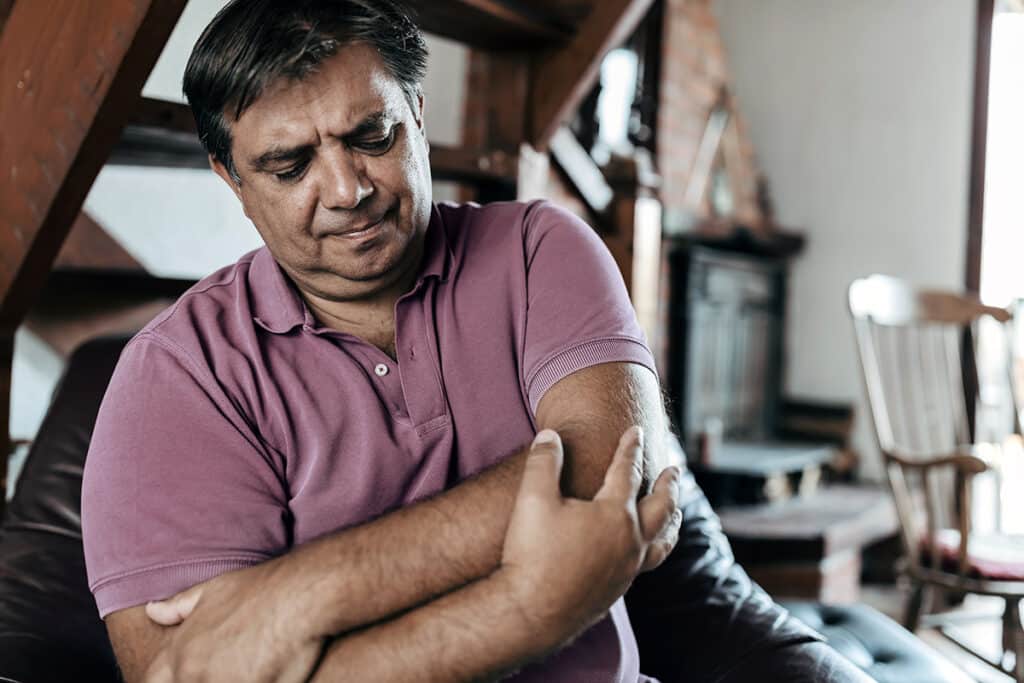
Radial tunnel syndrome is a condition characterized by pain and discomfort along the radial nerve, which runs from the upper arm down to the hand. While treatment options may vary depending on the severity of the condition, here are ten effective ways to treat radial tunnel syndrome:
1. Rest and immobilization: Give your affected arm adequate rest and avoid activities that worsen the symptoms. Immobilization with a splint or brace can help relieve pressure on the radial nerve.
2. Physiotherapy: Working with a physiotherapist can be beneficial for radial tunnel syndrome. They can guide you through specific exercises and stretches to strengthen the forearm muscles, improve flexibility, and reduce nerve compression.
3. Chiropractic care: Chiropractic adjustments can help align the spine and joints, relieving pressure on the radial nerve. A chiropractor may also use techniques like soft tissue treatment to alleviate muscle tension and improve nerve function.
4. Massage: Massage therapy can promote relaxation, reduce muscle tension, and improve blood circulation in the affected area. It can help relieve pain and stiffness associated with radial tunnel syndrome.
5. NSAIDs and pain medication: Nonsteroidal anti-inflammatory drugs (NSAIDs) like ibuprofen can help reduce pain and inflammation. However, it’s important to consult with a healthcare professional before taking any medication.
6. Splinting or bracing: Wearing a splint or brace can help limit movement and reduce strain on the affected arm. This can be particularly helpful during activities that exacerbate symptoms or while sleeping.
7. Ergonomic modifications: Making ergonomic adjustments in your workplace or daily activities can alleviate stress on the forearm and wrist. This may include adjusting your desk setup, using proper ergonomics while typing, and maintaining good posture.
8. Cold and heat: Applying ice packs to the affected area can help reduce inflammation and numb pain. Heat, such as warm compresses or a hot water soak, can promote relaxation and increase blood flow.
9. Ultrasound treatment: Ultrasound utilizes sound waves to stimulate blood circulation, reduce inflammation, and alleviate pain. It can be performed by a physiotherapist or healthcare professional.
10. Steroid injections or surgery: In severe cases that do not respond to conservative treatments, a healthcare professional may recommend corticosteroid injections to reduce inflammation or surgical intervention to release the pressure on the radial nerve.
Remember to consult with a healthcare professional, such as a physician or physiotherapist, to determine the most appropriate treatment options for your specific case of radial tunnel syndrome. They can provide a proper diagnosis and create an individualized treatment plan based on your needs.
Radial tunnel syndrome can cause discomfort and interfere with daily activities. However, appropriate treatment can reduce pain and promote healing. Resting the affected arm, physiotherapy and medication can reduce symptoms and improve mobility. Acupuncture and chiropractic care can also provide relief. In severe cases, surgery may be necessary. A healthcare provider can determine the best course of action. While there’s no surefire way to prevent RTS, taking breaks during repetitive activities and stretching regularly can help reduce the risk of developing the condition.
If you have any questions or would like to explore further, please book a free, no-charge online appointment with either myself, Dr. Tyler Baron, BASc, DC or another Kitchener chiropractor at CARESPACE.We are happy to listen and are here to help!

